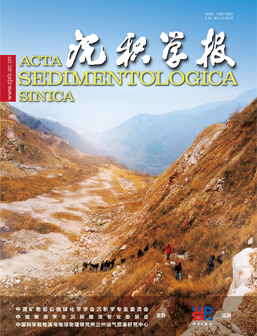Neoproterozoic Tectonic Evolution in the Middle Section of the Jiangnan Orogenic Belt: Revelations from Detrital Zircon U-Pb and Lu-Hf Isotopes
doi: 10.14027/j.issn.1000-0550.2024.036
- Received Date: 2023-09-27
- Available Online: 2024-04-09
-
Key words:
- Neoproterozoic /
- Jiangnan orogenic belt /
- Lengjiaxi Group /
- Banxi Group /
- detrital zircon
Abstract: 【Objective】Determining the depositional age, sedimentary sources and tectonic background of Neoproterozoic sedimentary strata in Hunan Province is one of the keys to understanding the tectonic evolution process in the middle segment of the Jiangnan orogenic belt.【Method】Six clastic rock samples of the Lengjiaxi and Banxi groups in the middle segment of the Jiangnan Orogenic Belt were collected. Provenance and tectonic setting of the sedimentary basin were constrained by studying the morphology, trace elements, and U-Pb-Lu-Hf isotopic composition of the detrital zircon, in combination with published data of detrital zircon and zircon from source area.【Result】The results showed that the Lengjiaxi Group was formed at about 852-825 Ma, and the Banxi Group was formed at about 820-720 Ma. The most important detrital zircon age peaks in the Lengjiaxi and Banxi groups are 920-790 Ma, while the Lengjiaxi Group also shows 1750-1620 Ma and 2500-2450 Ma age peaks, and the Banxi Group shows 1950-1790 Ma and 2420-2330 Ma. The Hf isotopeic characteristics show that the Lengjiaxi Group mainly receives sediments from the Yangtze Block, while the Banxi Group received detritus from both the Yangtze and Cathaysia blocks. 【Conclusion】The U-Pb and Lu-Hf isotopic compositions of detrital zircons indicates that the Lengjiaxi and Banxi groups were deposited before and after the amalgamation between the Yangtze and Cathaysia blocks. The Lengjiaxi Group was deposited in the backarc basin under the trencharc basin system, while the backarc basin was closed at 825 Ma, accompanied by strong folds developed in the sedimentary strata and a large number of S-type granites intrusions. The Banxi Group was deposited in intraplate rifting setting related to post-collision extension. Rifting related magma was flared up at 780-760 Ma and gradually weakened along the sedimentation of the Banxi Group.
| Citation: | Neoproterozoic Tectonic Evolution in the Middle Section of the Jiangnan Orogenic Belt: Revelations from Detrital Zircon U-Pb and Lu-Hf Isotopes[J]. Acta Sedimentologica Sinica. doi: 10.14027/j.issn.1000-0550.2024.036 |






 DownLoad:
DownLoad: